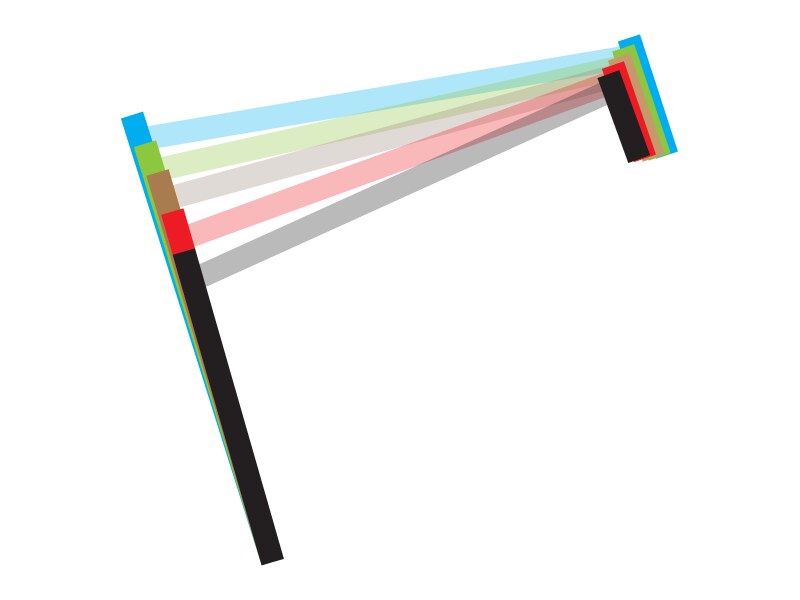For the absolute minutia obsessed, I've plotted the frames in terms of seat and head tubes to put some perspective on how they
really differ.

A few notes:
- This is the 2013/2014 geometry (the inaugural 2012 models were notably different).
- The seat/head tube thickness is approximate only, but the lengths/angles are 100% accurate (at least per their specs).
- Top tube position is approximate (since I don't know precisely how far bellow the top of the head/seat tube it is).
- Their site continues to be wrong in quoting the 19.5" as 19.
Key take aways:
- Trek has cheated a bit in terms of ETT measurements: By steepening the seat tube angle on the smaller frames it artificially shortens the ETT. Assuming that each rider has a single ideal seat position relative to the cranks, the saddle will be slid rearward on its rails on a smaller frame compared to the next size up (and/or slid forward on a larger frame compared to the next one down). Taking my seat height of ~31" as an example, the change in seattube angle between two frames nullifies more than 1/4" of the ETT (in other words, while on paper there might be 1/2" difference between frames, in practicality there is only 1/4").
- They've also varied the headtube angle: steeper as you go up in frame size. While this has a negligible effect on reach, it does mean the trail gets progressively less.
- The top of the headtube relative to the cranks (the frames' reach and stack) looks to be sensibly proportional, if affording only minor deltas between sizes. Beware of going down a size to reduce your reach: you will be dropping
down by more than you are coming in. You may in some cases be better off staying with the larger frame and swapping out the stem for a shorter one (and/or higher rise).
- The significant difference therefore between the frames is of course the standover and should likely be the driving factor when being fitted. As long as you have enough to be comfortable, but not so much as to have more seat post than tube showing, any two adjacent sized frames can, within reason, provide an
identical fit between them (by minor change in stem).
The one detail I dont know is if Trek varies the amount of excess steerer on the various frame sizes. Anecdotally, looking at other folks' photos, I would say not (and I've yet to see anyone flip the spacers to drop the bars).
On balance, in my humble opinion, while I like my bike I think Trek can do better with their sizing. As demonstrated there is not a tremendous amount of
actual size difference between them, which means that the posture for a tall person, even on one of the larger frames will be markedly different compared to shorter person on one of the smaller frames: the taller person will end up with the bars in a lower position
relative to the saddle compared to a short person. This can of course be corrected to a certain extent with stem swaps, but I wonder if the starting point couldn't be a little closer to the mark.